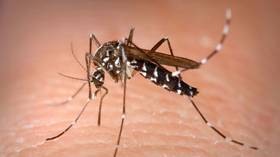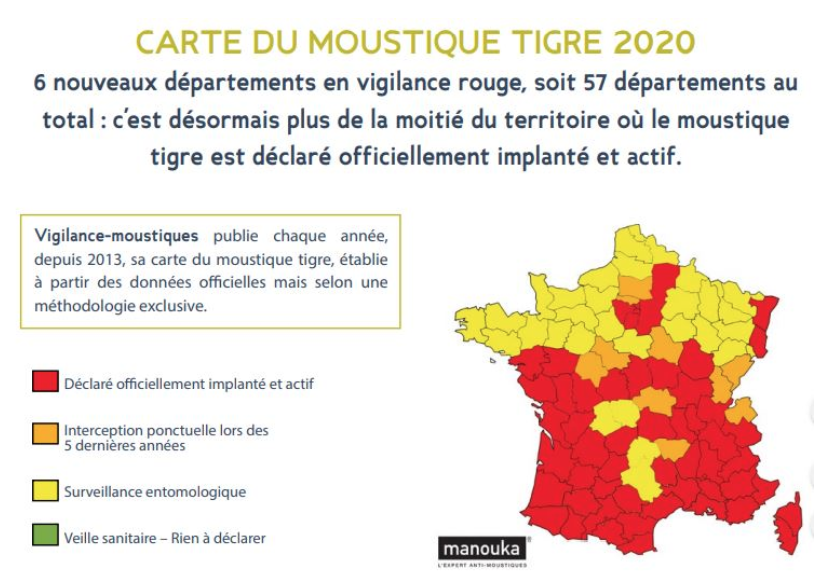First murder hornets, now tiger mosquitos? Over half of France warned of dengue & Zika-transmitting insects just as lockdown lifts

Almost 65 percent of France has been placed on red alert following another invasion by the aggressive tiger mosquito, a known carrier of dengue fever, chikungunya and the Zika virus, right before the country emerges from lockdown.
As the US braces for its own invasion by so-called ‘murder hornets’, a total of 57 of France's 101 departments have been placed on red alert as tiger mosquito hordes descend on the country – just as citizens prepare to return to work on May 11 following weeks of coronavirus lockdown.
A further 10 departments have been placed on orange alert, as experts predict that France will be fully colonized by 2030.

The insect began conquering Europe in the early 2000s, entering France in 2006. Some 22 cases of dengue and 31 cases of chikungunya have been recorded since 2010, in what were believed to be the first indigenous cases of infection with the erstwhile tropical diseases.
“Once installed in a district, the tiger mosquito is practically impossible to get rid of,” the Ministry of Health warned previously.
Also on rt.com That’s one way to encourage social distancing! MURDER HORNETS arrive in US in the middle of Covid-19 pandemicThe tiger mosquito, so called because of the white stripes on its body and legs, is fond of humidity and heat and prefers to feast on human blood rather than feed from animals. Though considered aggressive, the insufferable insect is “easy to crush” thanks to its “clumsy pace,” according to the Mosquito Watch website.
Its painful bite causes a small, itchy red pimple which can lead to symptoms appearing within five days, including high fever, muscle and joint pain, headaches and body aches, conjunctivitis and fatigue.
There is some good news, however: The WHO has confirmed that the mosquito does not transmit the novel coronavirus.
Experts are advising the population to keep the air conditioning on, wear loose clothing, apply repellant liberally, and use indoor and outdoor coil repellants, all while reducing the amount of standing water near homes and businesses.
Mosquito traps and repellents currently being tested by local authorities have thus far proved ineffective and, while mosquito nets provide some protection, tiger mosquitos – unlike their European counterparts – come out during the day as well.
France's General Health Authority reports that tiger mosquito populations in the country have doubled in the past two years, as researchers in the country are also looking at ways to sterilize female tiger mosquitos and turn the tide on the new plague.
Think your friends would be interested? Share this story!













